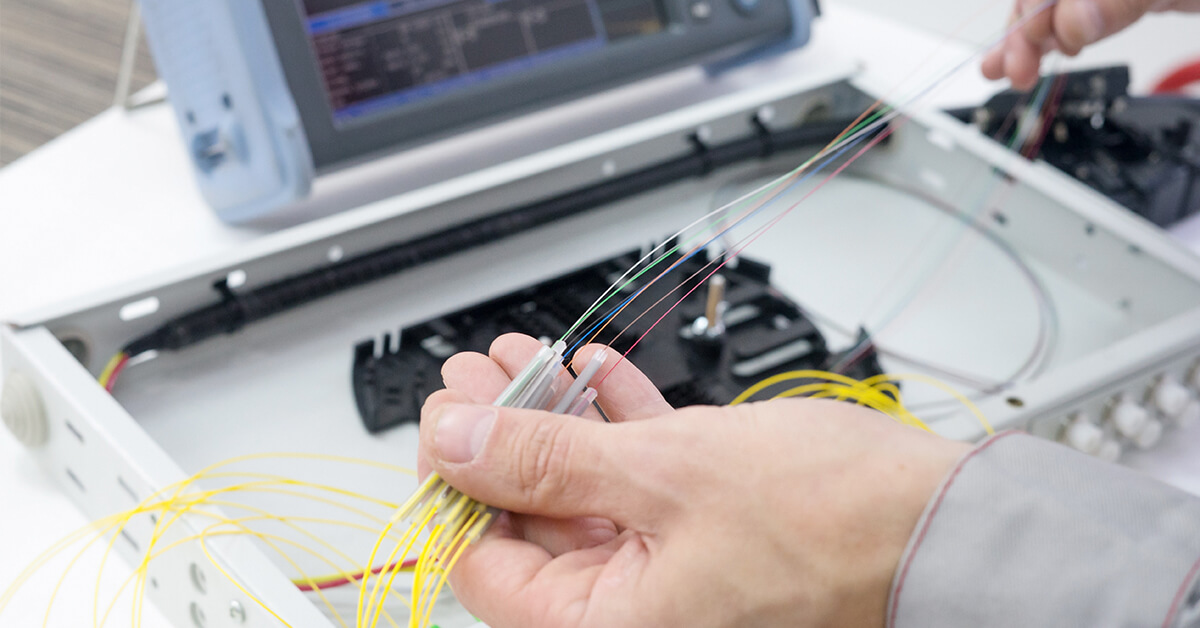How Long Does It Take To Install Fiber Optic Internet in my Commercial Building?

How long does it take to install fiber optic internet at your place of business? I recently had a customer who after 15 months, could not get fiber installed at their building. The landlord wouldn't allow for it. So, the answer is... it could take a little time or... it could possibly never happen. Choose the location for your business wisely.
When looking into installing fiber optic internet in your building, there are many factors to consider and nearly all of them impact your timeline.
It could be the size of the project that takes time or the difficulty of access. It could be the distance to the nearest fiber ring or a dozen other things.
We've captured six of the variables that can impact your fiber optic installation the most, so you can get a better idea of your timeline before kicking off the project.
What is Fiber Installation?
The quickest way to find out how long it will take to install fiber in your building is to request a quote. Our team is skilled at assessing all of the factors that impact your timeline and cost — we can help you navigate through all the complexities without the hassles of trying to do it all yourself.
Don’t be discouraged if installation might take a while; the long-term benefits of fiber are worth the time you will spend waiting to get it installed properly.
If you need to know what impacts the timeline, consider the following points.
How Long Does It Take To Install Fiber Optic Internet?
- How Close is the Nearest Fiber?
- Do You Need Special Permits?
- How Many Entry Points Does Your Building Have?
- What Existing Conduit Is Available?
- How Much Room is Available in the Telco Closet?
- Which Company Provides the Service
How Close is the Nearest Fiber?
A fiber-lit building has fiber facilities physically installed into the building and connected to a fiber provider's network. If your building is lit, your installation time drops dramatically.
If the fiber only reaches a pole or underground handhold outside, the building is not fiber-lit. In that case, your building's proximity to fiber resources will play a big part in how long the install will take.
Closer fiber splice points are always advantageous as it takes less equipment and human resources. If the fiber stops just outside your building, installation time should be reasonably short.
If you're looking at, let's say, a mile or more away, be prepared to wait significantly longer and pay more to get it in.
You might have to run the cable across many things, including, but not limited to, highways, cemeteries, and state parks. Environmental obstacles within and around buildings can quickly turn your installation of fiber optic materials into a costly and time-consuming project.
Related: 11 Huge Business Benefits of Fiber Internet Connectivity
Do You Need Special Permits?
Many factors govern getting lightning-fast internet speed run to where you want it, either at home or at work.
If the service provider must run a new fiber-optic cable from across town, getting permits will add to the timeline. Rights-of-way are a limited resource.
Fiber optics has to compete with many other entities and utility services providers for city/county right-of-way space. City managers must consider this and strike a balance that works for everyone involved.
Working with the politics of the local situation is just as important as obeying the codes and laws. Cash-strapped cities may drive their building inspectors to look for new revenue opportunities. Premises cabling is a growing trend, and code issues are starting to crop up.
Equally important may be county, municipal, or state building codes. You should check with the local municipal or county building department or inspector to find out about them. While you're there, discuss building permits, licensing, and fees too.
Many states have a telecommunications board. Check with them and your state's electrical board about any state permits or licenses that apply to telecommunications.
Pro tip: Applying for any permits early will save significant time on the backend and improve your chances of avoiding red tape that would delay your installation.
How Many Entry Points Does Your Building Have?
For the service installer to get fiber into your commercial building, they route the cable from the curb to the point of presence (the external distribution box, in this instance). From there, he runs it into the building through the wall and plugs it into a distribution box or frame in the building's meet-me-room (MMR) or basement.
The short answer is that fiber typically needs two entry points.
Building entry points come in many shapes and sizes. One aspect of BEP choice is familiarity with fiber routing and splice tray options. Most experienced fiber splice engineers will have their favorite FMS and splice tray solutions.
While access and availability of components are a factor, this is often a significant influencer too.
What Existing Conduit Is Available?
Next, the installer needs to route fiber cable from the building's basement to each floor. A fiber installation can be relatively simple, fast, and minimally disruptive if the installer can take advantage of spare ducts or existing conduits.
Buildings vary in design, materials, and available pathways. In newly-built apartment blocks and commercial buildings, this step is relatively straightforward. Architects include communications pathways and spaces into the design.
However, in older buildings, there may only be PVC electrical conduits in place. Most of the time, they are pre-populated with other types of existing infrastructure. There are newly developed techniques to expand conduits' capacity and add cables to conduits, usually considered full.
Pro tip: Adding pathways for your fiber to be installed and protected can take a dramatic chunk of time and should be a primary factor in your planning.
How Much Room is Available in the Telco Closet?
Telecommunication closets are small rooms where your network systems and devices are stored. In a multi-story building, telco closets must be stacked and centrally located, minimizing the room's distance to all user locations.
Telecommunications closets are infamous for being cramped spaces, sometimes also crammed with building system controls for fire alarms, air conditioning, telephones, security, video, and more. The cramped space creates cable transmission problems.
Fiber effectiveness may deteriorate due to inappropriate bend radius or equipment can be affected by heat dispensation issues from piling too much equipment into a small room.
You need to evaluate how much space you have available before installing fiber. You could find you require more hardware than you can fit in your telco closet.
Each closet should have sufficient space to handle your existing technology, plus extra room for future expansion. This extra space allows you to install fiber without disturbing your current system to avoid service interruption.
Once your tenants are all transferred to the new service, you can remove the old technology.
Note: If you need to construct an additional telco closet or retrofit other supportive infrastructure, the installation will take longer.
Which Company Provides the Service
Some companies might take a long time to install fiber because they are busy with orders ahead of yours. Other companies may give you promises and then take forever because they move extremely slow in providing new services.
It's also possible that the company has promised to get the job done but are moving slowly because they do not have the expertise or the workforce. They may just be leasing all their fiber from somebody else.
Suppose you know ahead of time that the company has real experience installing fiber into a building. In that case, it can be extraordinarily beneficial and let you know that it will get done efficiently.
How is Fiber Optic Internet Installed? Remove the Guesswork - Get a Quote
Don't spend hours on Google figuring this all out. It'll save you time and energy to talk to someone who knows about installing fiber and its factors.
Atlantech can answer all your questions. We will look in your area for the nearest fiber and measure how far we need to go to bring fiber into your building. You can remove the guesswork, get a quote, and get the process started right away.


